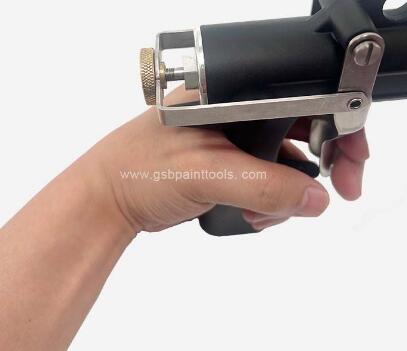How to Use a Paint Spray Gun
Paint spray guns are powerful tools that can make painting projects more efficient and produce a smooth, professional finish. Whether you're a DIY enthusiast or a professional painter, understanding how to use a paint spray gun properly is essential to achieve the best results. In this guide, we will walk you through the steps of using a paint spray gun effectively.
Selecting the Right Paint and Spray Gun
Choosing the Paint:
Before you start, select the appropriate paint for your project. Ensure that the paint is suitable for use in a spray gun and, if necessary, thin it according to the manufacturer's instructions. Different paints may require specific settings on the spray gun for optimal application.
Selecting the Spray Gun:
There are various types of paint spray guns, including high-volume, low-pressure (HVLP) guns, and airless spray guns. Choose the type of spray gun that best suits your project requirements. HVLP guns are suitable for detailed work, while airless spray guns are more efficient for larger surfaces.
Preparing the Work Area
Cover and Protect:
Before you start spraying, cover and protect areas that you don't want to be painted. Use drop cloths, plastic sheets, or painter's tape to shield surfaces, floors, and objects from overspray.
Ventilation:
Ensure proper ventilation in the work area to disperse paint fumes. If working indoors, consider using fans or opening windows to maintain good airflow. Use a mask to protect yourself from inhaling paint particles.
Preparing the Spray Gun
Adjusting Air Pressure:
Check the manufacturer's guidelines for the recommended air pressure settings for your specific paint and spray gun. Adjust the air pressure on the spray gun accordingly. Proper air pressure ensures a consistent and controlled spray pattern.
Adjusting Paint Flow:
Most spray guns have controls for adjusting paint flow. Start with a lower setting and make gradual adjustments as needed. It's essential to find the right balance to avoid over-application or uneven coverage.
Spraying Techniques
Maintaining Distance:
Hold the spray gun at the recommended distance from the surface you're painting. Typically, this is around 6 to 12 inches, but it may vary based on the specific spray gun and paint being used. Maintaining the correct distance ensures an even application and prevents drips.
Overlap Strokes:
When spraying, use overlapping strokes to achieve uniform coverage. Start each pass slightly overlapping the previous one. This technique helps avoid streaks and ensures a seamless finish.
Post-Spraying Procedures
Cleaning the Spray Gun:
After completing your project, clean the spray gun thoroughly to prevent clogs and maintain its performance. Follow the manufacturer's instructions for disassembling and cleaning the gun, including the nozzle, needle, and air cap.
Drying Time:
Allow the painted surface adequate time to dry before applying additional coats or handling the painted object. Drying times vary depending on the type of paint used, environmental conditions, and thickness of the application.
Troubleshooting Tips
Addressing Issues:
If you encounter issues like uneven spray patterns, clogs, or dripping, refer to the troubleshooting section of your spray gun's manual. Common problems often have straightforward solutions, such as adjusting settings, cleaning components, or changing the paint viscosity.
Conclusion
Mastering the use of a paint spray gun involves selecting the right equipment, preparing the work area, adjusting the spray gun settings, employing proper spraying techniques, and addressing any issues that may arise. With practice and attention to detail, you can achieve professional-looking results on various surfaces.
For further information on paint spray guns or to inquire about a reliable supplier, please don't hesitate to contact us. Our team is ready to assist you in finding the right paint spray gun for your specific painting needs.
















